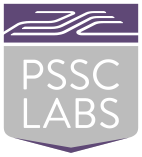High performance computing (HPC) generally refers to the practice of aggregating computing power in a way that delivers higher performance than one could get from a typical workstation or desktop computer, in an effort to solve problems in a variety of fields – business, science, engineering, and more. Over the past few decades, high performance computing has changed the way we perform research by speeding up the processes by which we can collect, manage, store, process, and analyze information. It’s fair to say that without advancements made by HPC products, research in many areas would have come to a screeching halt many years ago, and this is particularly true of the life sciences industry.
The life sciences space is dominated by data analytics. Almost all HPC work is comprised of large data sets that have extensive storage and networking requirements to handle real-time influxes from various sources. This means systems working on life science research projects need a surplus of processing power.
How HPC is Changing the Life Science Industry
The availability of high performance computing systems in the life science industry presents an opportunity of economic competitiveness and scientific discovery. With HPC being the technology at the forefront of scientific research, it’s truly positioned to help life science organizations pioneer new solutions to the world’s heath problems – something we’ll all find so relevant in these times.
HPC and big data technologies allow research organizations the opportunity to drastically accelerate discovery life cycles across the life science industry, through scenarios such as:
- Chemistry: bio-chemistry, molecular modeling, etc.
- Bio-engineering: agricultural engineering
- Genomics: complex disease genomics, agrigenomics, oncology, microbial genomics, etc.
- Biology: molecular biology
- Pharmacology: pharmacokinetics and pharmacodynamic modeling, drug discovery, etc.
- …and so many other disciplines within the life science space
As artificial intelligence continues to be adopted by organizations of all industries, it becomes more and more clear how significant this kind of technology is, particularly when applied to the life sciences research field and especially in the widespread pandemic like that caused by COVID-19. AI along with medical imaging is being harnessed in the fight against COVID-19 in diagnosis, treatment, and monitoring. With the help of artificial intelligence, researchers are also developing new tools that can help with early detection of the virus, plus personalized therapies for those infected.
HPC for Life Science: Cloud vs. On-Premise
While it’s safe to say that nearly all life science research organizations have adopted high performance computing as a means of managing their data, there’s still the argument of where to manage and store that data – through either on-premise or cloud computing resources. Some companies look into moving to the cloud in an effort to save on storage and processing costs, but what they’re not aware of is that the cost of storing data on the cloud gets more expensive as your data sets grow. Seeing how life sciences research organizations are forever learning and ingesting new data sets, it only makes sense that these scientific leaders are seeing their storage needs grow as well. With an on-premise data environment, data is stored at a fixed cost – the cost of the purchased system. There’s no sky high prices associated with accessing the very data that is already owned, something that cloud services can’t provide.
Other discrepancies between cloud providers and on-premise are those of security and reliability. With data stored in the cloud, everything is shared and no one, except the cloud service provider, owns anything. That means that the hardware, and physical resources inside of it like CPU cores, storage drives, and network interfaces storing your data are likely being shared by other organizations as well, organizations that could be direct competitors or even being investigated by government agencies due to questionable behavior.
In respect to reliability, storing data in the cloud means that organizations are at the mercy of their cloud provider. If that providers systems are down, there’s nothing to do but sit and wait through the restoration process. When data is stored on-premise in a data warehouse, any downtime would be rare, but more importantly, the hardware is physically accessible should any issues arise. Hardware providers also have dedicated support engineers to help address issues and minimize any downtime.
With the many scientific advancements that have come to light over the past few decades of widespread high performance computing in the life science space, it’s no secret that HPC will be the game-changing technology needed to solve our world’s health problems. We’re just here to make sure these organizations fighting on the frontlines have the tools and information they need to be successful, because a healthier world is one we all want to see.

